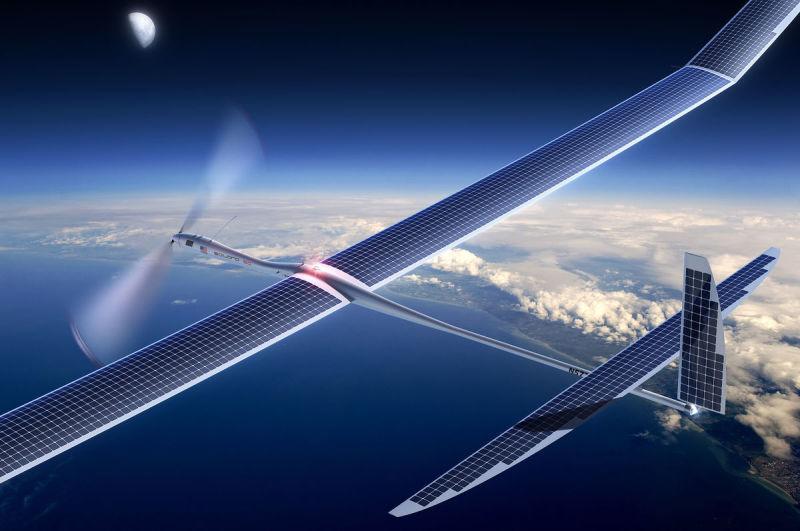Andre’ Borschberg thinks that the next step after the solar plane is the deployment of unmanned, high altitude solar drones that could stay up for months at a time.
“We could have an unmanned airplane using the sun as the only source of energy, capable of flying at least 6 months non-stop above the traffic of airliners in the stratosphere, above the storm clouds and rain where the air is calm,” Solar Impulse Pilot Borschberg wrote in his recent blog post.
“This airplane could go up and come down every 6 months replaced by another one to continue to mission cycle. With each flight, the equipment could be replaced, upgraded and specifically adapted to the needs of the mission.”
Borschberg envisions solar drones as an alternative to much more expensive satellites. He concludes his article: “Full flexibility and full sustainability. The dream! On top of it no pollution and no left overs in space!” The idea of a network of low-cost, recyclable solar powered drones that require no rocket fuel to launch is truly intriguing, but is it practical?
In fact, Borschberg is not alone in his dream of solar drones. Facebook and Google have both been testing a number of different ideas, including solar drones, as possible ways to deliver internet service to remote areas.
Google’s first experimental drone, Solara 50, developed for google by Titan Aerospace, crashed landed in the sands east of Albuquerque New Mexico in May of 2015. Despite the setback, Google is apparently moving ahead on the project.
Over at the Connectivity Lab at Facebook, engineers are hard at work on their own solar communications drone project, called “Aquila.” Facebook founder Mark Zuckerberg teased the project in a recent Facebook post: “…we’re building technology to connect everyone by beaming down internet access from solar-powered planes and satellites using lasers. We will soon have the first flight of our Aquila aircraft that has a wingspan larger than a Boeing 737 but weighs less than a car…  We’re also working to launch a satellite into orbit to connect Sub-Saharan Africa this year.” According to a Facebook press release: “With Aquila, we’ve designed a new aircraft architecture, one that can support staying in the air for months at a time. Aquila is solar powered, and when launched, it will create a 50-km communications radius for up to 90 days, beaming a signal down to the people in that area. This signal will be received by small towers and dishes that will then convert it into a Wi-Fi or LTE network that people can connect to with their cellphones and smartphones.”
We’re also working to launch a satellite into orbit to connect Sub-Saharan Africa this year.” According to a Facebook press release: “With Aquila, we’ve designed a new aircraft architecture, one that can support staying in the air for months at a time. Aquila is solar powered, and when launched, it will create a 50-km communications radius for up to 90 days, beaming a signal down to the people in that area. This signal will be received by small towers and dishes that will then convert it into a Wi-Fi or LTE network that people can connect to with their cellphones and smartphones.”
Meanwhile, Andre’ Borschberg and Solar Impulse co-founder Bertrand Piccard have been busy supervising the repairs to their aircraft before it resumes its circumnavigation of the globe. On July 3rd, 2015, they completed the longest leg of the journey (from Japan to Hawaii) but the plane’s batteries took serious thermal damage that has required months to repair. The Solar Impulse is scheduled to resume its flight in April 2016, after testing beginning in February.
In the interim, Borschberg and Piccard took part in the CO21 United Nations climate talks in Paris. Borschberg imagines their focus will be on using solar drones for environmental monitoring.“There is a growing need to observe the Earth from the sky,” he said. “The climate is changing and the patterns are different year after year. It is increasingly important to be able to monitor and react quickly. I’m sure that by observing from the sky we can improve the use of the land and the quality of the agriculture, as well as our knowledge of oceans and forests.”






